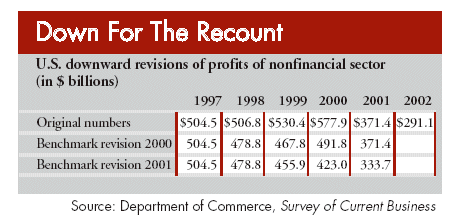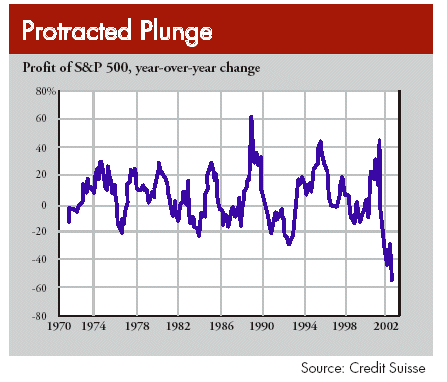Tentative Market
First of all, I want to thank my two colleagues,
Bo Harvey and Todd Gordon, for filling in for my column on Monday and
Tuesday. Guys, you did a great job. I trust you received some good insight from
their comments.
In staying with their theme, and the one that I started on last week, HVT
is real quiet right now. For me it boils down to six to eight trades in the
first hour-and-a-half, and is then followed up with “position” trades
for the remainder of the day. For an HVT person, position means a trade
that last 20 minutes to maybe a couple of hours. As has always been the case,
when things get slow, this is an ideal way to get through and make money at the
same time, so the column will focus a bit more on that from time to time.
I also thought it would be helpful to discuss some longer-term developments
that just may be causing the market’s current dilemma of being extremely weak,
but more importantly, tentative, which is the primary reason that trading has
become difficult, as well as offering some insight in where we may be going from
here (hint:Â it will be in direct contrast to the Wall Street
cheerleaders).
There are still many people out there (my poor parents for instance, due to
their broker, who is a clown — my apologies to professional clowns) who have
not only had their portfolios decimated, but seem completely unaware of how much
risk they are still at, even after a 40%, 50% or 70% beating. In the past (just
several months ago), selloffs and rallies were always pretty convincing and
decisive. Lately, it seems like more of slow drip down, or a slow grind up.
While that makes for decent intraday position trading, it makes for lousy HVT.
In my opinion, this will not change very much until there is a clear direction
either way in the market. With Iraq hanging over us, expect more of the same.
If we manage to turn Iraq into a decisive victory without getting bogged
down, this will help, but it will only then turn the spotlight on the serious
economic problems here at home. I do not know of any trader (maybe one exists)
that trades purely on fundamentals. Charts are the standard equipment. However,
for longer-term investments and forecasting, you cannot ignore fundamentals.
When fundamentals coincide with a favorable chart pattern, that is the ultimate
combo in my opinion.
For instance, AutoZone
(
AZO |
Quote |
Chart |
News |
PowerRating), a stock
that has been on my short list for many months, was finally triggered yesterday,
once it broke down on some of the technical levels that I look at. My hunch is
that eventually the negative news will leak out. In the meantime, I am short a
stock that is technically weak to begin with. A protective stop is in place, and
now I wait patiently.
But back to my point. Until this market either capitulates or companies start
making some money (see chart below), the market will remain sluggish and more
than likely on a downward path. The fact remains, since 1997, we have witnessed
the worst profit performance in the whole post-war period

So based on this trend, there is no reason to believe a profit recovery is
imminent. Secondly, despite record low interest rates, companies now have a
higher net interest expense that just five years ago. Interest expenses for the
non-financial sector between 1997-2001 increased by 65%, manufacturing by 81%.
These upward trends were still evident in 2001, all during a time when interest
rates were in decline. How is that possible? Acquisition binges to facilitate
Wall Streets appetite for ever higher earnings. The problem is that so much
goodwill was derived by grossly overpaying for acquisitions. So while profits
“appeared” in the short run as a result of this, it was a strategy
that was doomed in the long run. So as long as a turn around in profits remains
a distant thought, do not look for corporations to ramp up cap-ex anytime soon.

Bulls then point to the idea that consumer spending and home values will
rescue the manufacturing sector by creating more demand for “final”
products, which in turn will produce profits for the company. Wrong again. A
spending binge financed by cheap credit and tapping your home’s equity to
further fuel that binging is not sustainable. Furthermore, final demand for most
consumer goods like electronics and a variety of other items does not directly
benefit a US company necessarily, it probably benefits a foreign company.
Remember, most consumer goods can be manufactured overseas at a significantly
reduced cost. Most economic principles are based on the idea that net savings
and new investments are the cornerstone for growth and wealth creation. If an
economy consumes all that it produces and does not invest in research, machines
and structures, it will eventually stagnate.
Depressing? Sure is. Accurate? Your call. But I have managed to think this
way all year and maintain my portfolio (non-HVT) and actually edged out small
gain YTD. In my humble opinion, things are very different this time and will
require you to approach not only trading, but investing a bit differently. Adapt
or be wiped out.
As of 5:30 a.m. PST, it appears as though the long-awaited bounce may be in
place. If it holds past the first hour of trading, the market may have a shot
over the next few days of posting some nice gains. That being said, there are
some stocks poised to move higher on a non-HVT basis. Keep an eye
on stocks like:
(
COF |
Quote |
Chart |
News |
PowerRating)Â Â Â Â Â Â Â
above 36
(
SMH |
Quote |
Chart |
News |
PowerRating)Â Â Â Â Â Â
above 21.55
Bear in mind that the above trades are viewed as longer-term in nature
(several days) and certainly carry a higher degree of risk since the overall
trend in the market is down.
| Intraday Setups |
|
|
|
|
| Stock | Action |
| BAX | Short |
| MSFT | Short |
| IDPH | Short |
| NVLS | Short |
Key Technical
Numbers (futures):
S&Ps |
Nasdaq |
| 856 | *872* |
| 850 | 864.75 |
| *839-42* | 857 |
| 835 | 853.50 |
| 829 | 849 |
| 823 | 841-45 |
| 813 | 832.75 |
| *802* | |
| *776* |
* indicates that I feel this level is more significant.
As always, feel free to send me your comments and
questions. See you in TradersWire.
